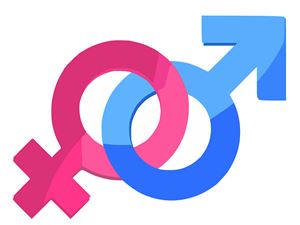
It has become increasingly popular in Christian circles to apply politically correct sentiments to language for God. Some have even changed the trinity language of Father, Son, and Holy Spirit with feminine formulations, such as Mother, Child, and Womb.
This raises an important question: does God have a gender? Does the Bible say whether God is male or female? Can we know for certain from the Word of God? Can we tell from the style of the literature or the original authors or have translations over the years changed it?
Here is what the Bible has to say about God’s identity.
Gender is Biological
Gender is biological and God doesn’t have biology. God is spirit (John 4:24). He doesn’t have a body—He doesn’t have chromosomes, genitals or any of the physical markers of gender. Physical attributes like that can be found in the demigods of paganism, but are far from the images of God that are found in Scripture.
In addition, the Bible tells us “God created man in His own image, in the image of God He created Him; male and female He created them” (Genesis 1:27). As God created both male and female in His image, He does not participate in one or the other gender, but rather transcends gender. It is not something that is biologically a part of Him.
The Bible Refers to God in Masculine Terms
God is never described with biological features in scripture, but He does consistently describe Himself with masculine pronouns, which can be confusing for many. Why the Bible refers to God in masculine terms really only has one answer, and that’s because its how God chose to reveal Himself to us.
While God contains all the qualities of both male and female genders, He has chosen to present Himself with an emphasis on masculine qualities of fatherhood, protection, direction, strength, etc. Metaphors used to describe Him in the Bible include: King, Father, Judge, Husband, Master, and the God and Father of our Lord Jesus Christ.
However, what most don’t realize is that the Bible also employs feminine images for God, such as mother (Isaiah 49:14–15; 66:13) and midwife (Isaiah 66:9). Likewise, His judgment of Israel is likened to that of a mother bear robbed of her cubs (Hosea 13:8). Whether masculine or feminine, this choice of language is to show a personification of God that reveals Him to us in ways we can understand.
There are those who would like to blur this emphasis in some of the newer Bible translations, but it is very dangerous to tamper with the way God has chosen to reveal Himself. He most certainly does not intend to minimize women, since men and women are revealed as being made in His image and are of equal value to Him.
One famous Christian scholar, C. S. Lewis, has suggested that gender is far deeper than our human distinctions reveal. He suggests that God is so masculine that we all are feminine in relation to Him. If this is true, it might explain why the church is referred to as the bride of Christ, though it is composed of both men and women.
God Uses the Bible’s Language to Teach Us
God is not a man or like men. But we are made in His image, and there is one man who finally teaches us what it is to be human, and male, and female, and children of God. Other aspects of human nature are prepared such that they help us understand God’s relationship to us. Gender falls into this category.
The coming of Christ illuminates and transforms our understanding of both these gender categories. In Jesus’ relationship to God, we finally see what “Father” and “Son” and “love” (and many other things) really mean. In Jesus’ relationship to His people we find out “man” and “woman” and marriage are all about, because we become married to Him in our hearts.
God chose to be revealed in this form in order for man to more easily grasp who He is. While God makes allowances in order to help us understand Him, it is important to not try to “force God into a box,” so to speak, by placing limitations on Him that are not appropriate to His nature.

